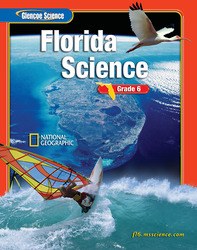1.
A) the Sun's gravity B) gravity slab pull C) convection currents D) the movement of the planets 2.
A) This evidence proved that new seafloor features are constantly being added due to reversals of Earth's magnetic field. B) This evidence proved that new seafloor features are constantly being added due to seafloor spreading. C) This evidence proved that new seafloor features are constantly being added due to continental drift. D) This evidence proved that the rocks on the seafloor were older than rocks on continents. 3.
A) the plates that make up the crust and the upper part of the mantle B) the plates that make up the crust C) the upper part of the mantle D) large, flat stones sitting on top of malleable magma 4.
A) The denser oceanic plate slides under the less dense continental plate. B) The less dense oceanic plate slides under the denser continental plate. C) The less dense oceanic plate slides past the denser continental plate. D) The denser oceanic plate slides on top of the less dense continental plate. 5.
A) a puzzle-like fit of all the continents B) Similar rock structures have been found on different continents. C) Fossils of animals have been found on continents separated by oceans. D) all answers are correct 6.
A) because new crust is being added to the other edge of the boundary B) The other edge of the boundary is being pulled into Earth's core. C) It is too dense and is sinking into Earth. D) Gravity is pulling it down. 7.
A) all answers are correct B) forms mountains C) forms ocean basins D) causes volcanoes 8.
A) divergent boundaries B) compressional forces C) reversals of Earth's magnetic field D) erosion 9.
A) the belief that Earth is broken into sections that fit together into one sphere B) the belief that Earth's crust and upper mantle is broken into sections C) the belief that continents have moved slowly apart to their current locations on Earth D) the belief that hot, less dense material is forced up through Earth's crust through mid-ocean ridges 10.
A) A transform boundary is when two plates pull away from each other. B) A transform boundary is when two plates slide past one another. C) A transform boundary is when two plates move toward each other. D) A transform boundary is when two plates collide. 11.
A) the large landmass in which all continents once were connected B) the large landmass that all continents are currently forming C) Earth's inner core D) the largest fault found on Earth 12.
A) slide along each other B) move away from each other C) converge D) move toward each other 13.
A) Alfred Wegener B) Harry Hess C) Albert Einstein D) Galileo Galilee 14.
A) It goes under the other plate. B) It combines with the other rock. C) It disappears from Earth. D) It goes over the other plate. 15.
A) They only converge or diverge. B) They only can move toward each other. C) They only collide or slide along each other. D) They can collide, pull apart, or slide against each other. 16.
A) the belief that continents have always been located at their current locations on Earth B) the belief that continents are moving slowly together from their current locations on Earth C) the belief that continents have quickly moved apart to their current locations on Earth D) the belief that continents have moved slowly apart to their current locations on Earth 17.
A) when Earth's magnetic field leaves the north pole and enters the south pole B) when Earth's magnetic field suddenly disappears for short periods of time C) when Earth's magnetic field leaves the south pole and enters the north pole D) when Earth's magnetic field suddenly runs east/west instead of south/north 18.
A) The longer it takes a sound wave to return to the ship, the colder the water is. B) The longer it takes a sound wave to return to the ship, the more shallow the water is. C) The less time it takes a sound wave to return to the ship, the deeper the water is. D) The longer it takes a sound wave to return to the ship, the deeper the water is. 19.
A) a boundary where rocks on opposite sides of the fault move in opposite or the same directions at different rates B) a boundary where rocks in the fault never move C) a boundary where rocks on the same side of the fault move in the same direction, but at different rates D) a boundary where rocks move in the same directions at the same rate 20.
A) No, usually no subduction occurs when continental plates collide. B) Yes, subduction always occurs when continental plates collide. C) Yes, subduction always occurs when oceanic plates collide. D) No, earthquakes always occur when two continental plates collide.
















